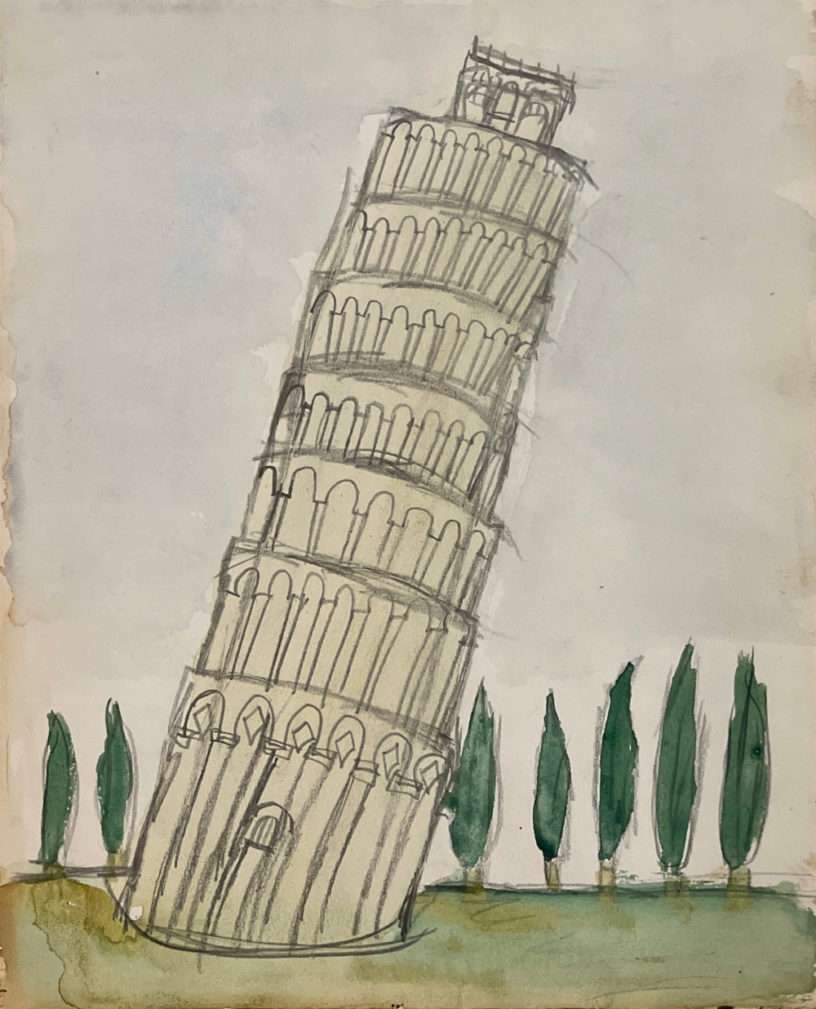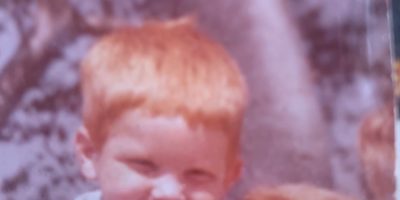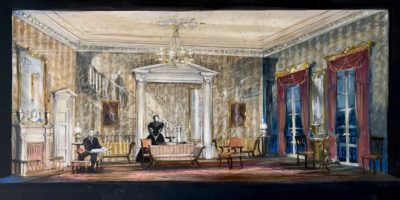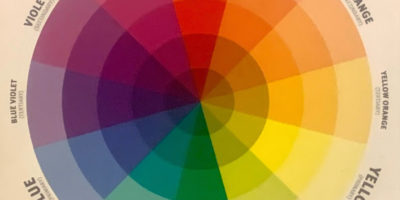A red-headed boy, me, leans out his bedroom window into a cool southern California night. An arbor of oversized, dense, shattered roses is right below me. In the distance, a train whistle from the Santa Fe is heard. The distant searchlights swept the sky—in the postwar boom searchlights indicated a super market opening. The house, so large, old, slightly dusty from the wind, has sleeping porches, a widow’s walk, speaking tubes, full attic and stone basement, front and rear stairs, a wisteria vine, a honeysuckle, hibiscus bushes, lantana, plumbago, scotch broom, fuchsia. The hummingbirds loved the fuchsia vines. In the rear garden, to the west, a windbreak of eucalyptus trees protected us and filtered the bright orange sunsets my mother called “Los Angeles burning up.” A fig tree, a guava tree, and squash flowers went wild in the lower garden behind the dilapidated wooden garages some too narrow for modern cars. Next door were two enormously tall avocado trees, favorites of dive-bombing birds. Near my window too, was my favorite tree, the camphor, which somehow has never made it to the stage. Yet.
I see this in my head and ask myself, “Why is this boy a set designer?” I was a child of academics, so not allowed comic books, except for Classic Illustrated’s Hamlet, Lorna Doone, and The Count of Monte Cristo, nor coloring books. I was provided with piles of old blank paper though, and crayons to develop my drawing skills, and exposure to Shakespeare at an age even before certain memory. Read aloud to by my older parents (in their old childhood books, so many little Victorian girls seemed to die of consumption on Christmas Eve) my childhood’s style therefore included the first five decades of the twentieth century. It was a small town childhood for an overly sensitive and overly observant child. I suppose one might ask in hindsight, “What else would you expect him to become?”
This boy is who I recognize as myself, but I am still wondering why the set designer? I saw Midsummer Night’s Dream (deemed by my parents the perfect starting Shakespeare for a six year old) in Oregon, and imagined the mossy banks of the Rogue River to be an appropriate setting for the play, though I remember just as vividly an All’s Well that Ends Well, and the Ashland Oregon archives reveal even a Merchant of Venice I think I saw a year before … But like many children of my time, it was a first grade visit to the tryout of Peter Pan at the Philharmonic that flipped my switches, Mary Martin and all. I understood I wanted to fly, I understood it might be even more intriguing to fly on a wire, but oddly I understood what a set designer did as well. I totally got it. Age 6 or 7.
I “got” ground plans —and since we were always in the mezzanine, at best, I was familiar with the floor plan. And for what technical reason did the ground cloth only appear the first time we were in Neverland?
At home, on the unused dusty western sleeping porch, I first experimented with sightlines in a tragic (to me) one chance only experiment with cardboard refrigerator boxes. I couldn’t mask the actor’s entrance well enough for my critical eye. I later attempted a potentially much more tragic attempt at flight with a rope and home-made flying harness. Experiments with lighting came to a quick and literally shocking end playing with colored lights in a damp basement. I was not going to be a lighting designer.
I am slightly ashamed to say that for the first two years of my career, at least until age 8 and 1/2, I designed nothing other than Peter Pan. A year in Europe, was spent visiting Tivoli, La Scala, the Old Vic, The York Mystery plays, The Volksoper, The Paris Opera (I patiently waited through all of the opera of Samson et Delilah , and that’s a long sit, only to have the temple not fall!), a Zarzuela in Spain (forced perspective raked deck of checkerboard squares and doves flying from the balcony onto stage umbrellas in THE SAME SCENE!) This led to my mind opening to other possibilities.
Enlarge
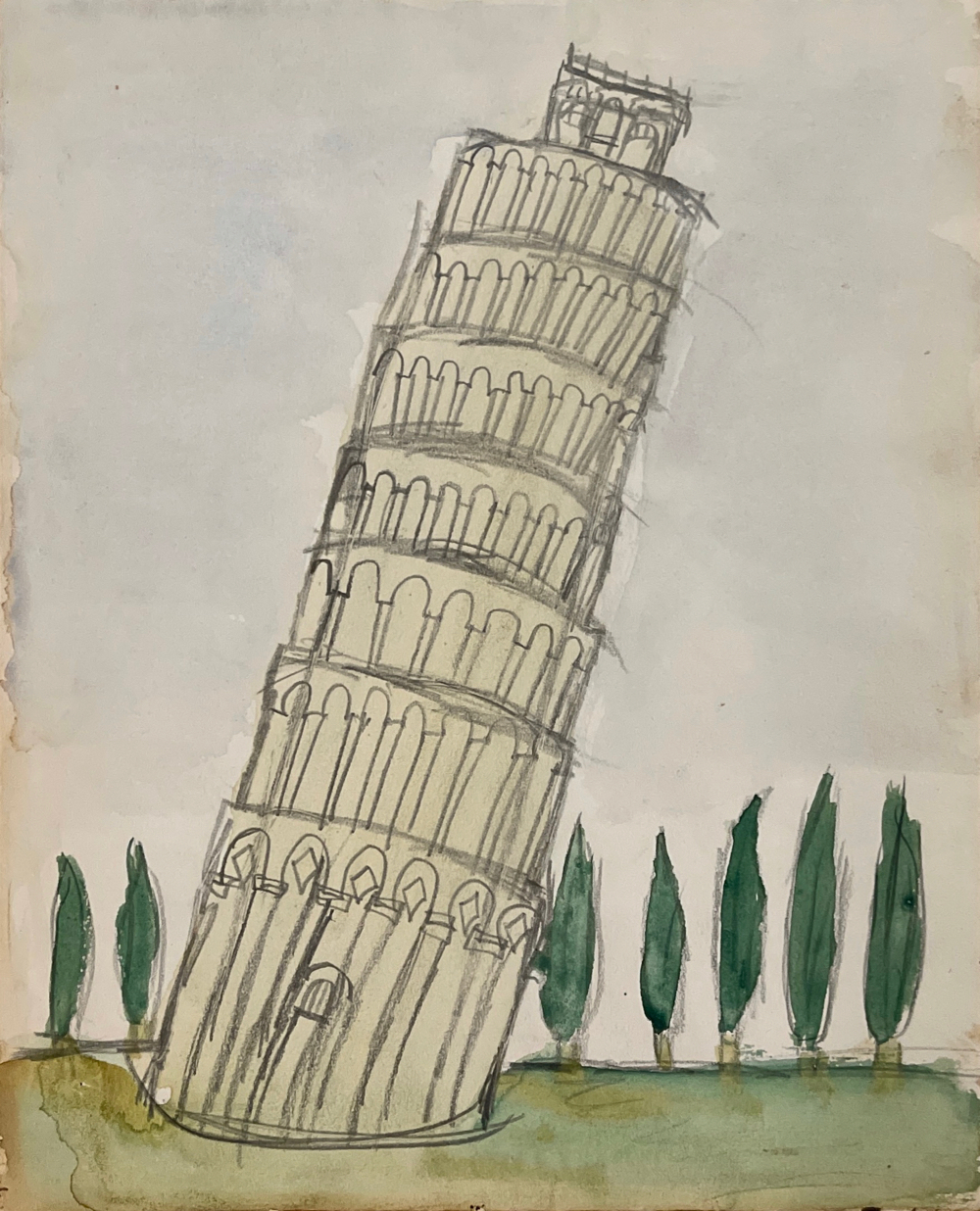
A complete year-long tour of Europe would not be lost on a visually observant child. We visited museums and cathedrals, palaces and castles. And we were being read aloud to: A Tale of Two Cities (in France) Tales of the Alhambra (in Southern Spain) The Further Adventures of Nils (in Scandinavia) Sherlock Holmes and Ivanhoe (well, you get the idea.) Three months of school in England led to me having an English accent, a terror of cricket, a repulsion to boiled greens, a rather obnoxious ability to identify the three kinds of English country churches, and a very solid (and later as a designer, very useful) memory of sadly deprived postwar Britain.
I saw college Shakespeare, Gilbert and Sullivan, and road companies of musicals, and maintained an odd fascination with floor plans. The local arthouse movie theater of a college town meant multiple boyhood viewings of previews for Bergman’s The Virgin Spring. The Red Shoes, Moulin Rouge, Los Olvidados, The Tales of Hoffman, and all of Audrey Hepburn’s output in order of filming, were considered appropriate movies for the young … oh, and Samson and Delilah for DeMille to bring down that Philistine temple, whose destruction could be seen twice if you timed attending the continuous showings cleverly. I built many a teetering reenactment of building blocks in the back yard. My little Showboats, alight with sparklers, floated in our murky little fishpond. A paper Rome burned in the barbecue. You don’t see set designers in small towns, it is not a familiar profession like firefighter or teacher, so I had no idea as to what profession I was emulating.
A move to yet another enormous house with gardens allowed space to build a complete model theater, or two, or three—basically an arts center in the garage. It just came out of me. I didn’t notice that my designs imitated but didn’t completely copy Oliver Smith’s designs for My Fair Lady or Camelot. Years later, at a Brooklyn funeral I realized that his Gothic show portal of Camelot (I had memorized it from the album cover) was taken almost whole from the altarpiece of a church in Park Slope, near his house.
Yes, in my little town I was the only set designer in elementary school, and in junior high as well. And I was busy at it. Some children are driven. I think my parents, confused, hoped I would be an architect. I certainly thought I would be an English teacher. We were all in denial.
As a teenager, seven months of living in Colombia (academic families go on Fulbrights; it’s normal.) engendered more reading, picking books by their length to fill in long afternoons, and the inadvertent discovery of papier mache’ which started the creation of a puppet company. And Ralph Richardson visited as Bottom in a tour that played the Teatro Colon, the red and gold shabbily elegant colonial opera house, its red velvet drapes shredding and pigeons living in the “heavens “— an unforgettable performance, as he got the laughs on Shakespeare’s lines.
I returned to the sunny Southern California of the sixties and high school, now doing posters, designing and making costumes, smoke machines, scenery, masks , puppets, decorations. More theater going and reading. Staring at programs and photographs of theater productions, I read anything and everything I could find about theater. I would stare at the photographs, memorizing them. I was worried that all of it would disappear before I got a chance to join in. My mind was so full of so many wonderings, that I didn’t even notice that I was relatively intelligent—and different from the other kids. I just kept going.
I studied English Literature at Brown, but really did constant design work, went to summer stock, and then Brown led to Yale School of Drama, and …
But what I am trying to remind you of is this: That boy is who I am as a designer—faults and all—and that childhood is an inherent constant in my work. My family virtues and limitations are intact: my frugality, from my father and the Depression, yet a house filled with literature and books, my mother’s organizational and hand skills—she taught me carpentry, knot tying, and machine sewing. I still inhabit my own shyness, still affected by my kind mother’s almost pathological honesty and modesty. But mostly I am, for better or worse, the childhood associations I bring. I must have been crawling on my knees by those huge baseboards I design, God knows I’ve tried to get those flowers and trees onstage in one way or another. Victorian pocket doors are natural to you if you never didn’t know them, as are the mouldings that surround them, picture rails, plate rails, and transom windows. The porches and arbors were there from the beginning.
Enlarge
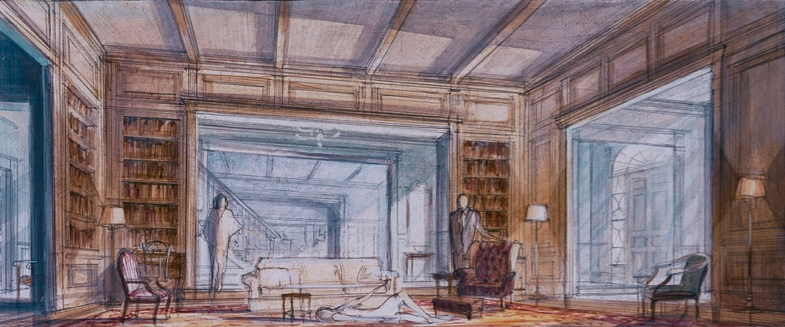
ORIGINAL SKETCH BY JOHN LEE BEATTY
Linda Ronstadt once said all the music she sang was really in her from childhood, and so do many of my designs often embody my earliest experiences. I know I have at my best, an ability to give scenic rooms an emotional quality, which is an odd gift, and my most successful designs have some depth charge from that childhood full of observation. The long-ago porches, tall staircases, wisteria vines, are all a part of me, as is the joy of the theater, and theaters itself — the red velvet drapes, the gold, the scrims, the mysterious wings — or the need to recreate that subdued excitement I felt at so many now long ago theatrical matinees.
